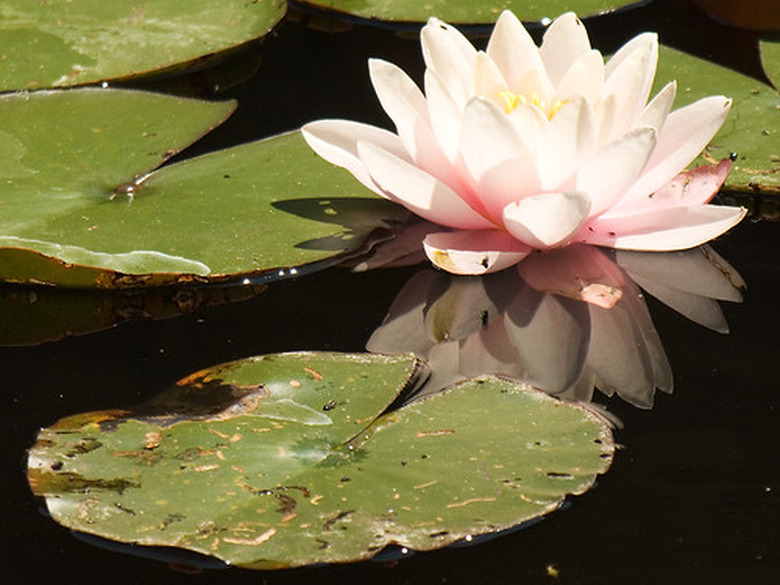Why Do Water Plants Have Stomata On Upper Part Of Their Leaves?
Stomata are porelike openings that allow for gas exchange on leaf surfaces. In some aquatic plants, the lower part of the leaves floats on the surface of the water, so there are no stomata on this side. The stomata are located only on the upper part of leaves in aquatic species like water lily (Nymphaea spp.). Other aquatic plant species, like seagrass, do not have stomata. In place of stomata, seagrasses have a thin cuticle layer on their leaves that allows for gas exchange through the entire outer surfaces of the leaves, which are completely submerged in water.
Function of Stomata
Function of Stomata
The basic function of stomata is to allow for plants to take in carbon dioxide and release oxygen and water. Carbon dioxide is required for photosynthesis, one of the primary processes that is vital to plant growth and development.
During photosynthesis, carbon dioxide is combined with water to produce glucose and oxygen. Carbon dioxide moves into plant cells through stomata, and plants release oxygen into the atmosphere through stomata as plants photosynthesize.
Another essential process in plants is respiration, during which sugars are burned to fuel basic metabolic processes in plant cells. Respiration creates carbon dioxide and water, and stomata allow plant cells to release these products.
Plants need to take water in for photosynthesis and let water out of their cells during respiration. The process of water loss through plant leaves is referred to as transpiration, and stomata regulate the movement of water out of plant leaves. The movement of water into plant cells happens primarily in roots, and the water is then carried to other plant parts through specialized water-conducting tissue called xylem.
Types of Stomata
Types of Stomata
The location of stomata varies with plant species. In plants like cacti that are adapted to dry environments, stomata are often located on the lower part of the leaves. This helps reduce water loss; the underside of the leaves is shielded from direct sun and usually cooler than the upper side.
Some plants that live in the desert open their stomata only during the night, when temperatures are lower. This helps reduce water loss from transpiration. The opening and closing of stomata is controlled by structures called guard cells, which are regulated by the internal water pressure, also known as turgor pressure.
Plants that live in the water face very different conditions from those that are adapted to dry conditions. With leaves that are submerged or floating on water, these species need strategies for preventing too much water from coming into their cells when as they exchange gases. In aquatic plants like water lilies, the stomata are located only on the upper part of the leaves, in the outermost layer called the Botany(Morrow'>epidermis/13%3A_Leaves/13.03%3A_Eudicot_Leaves/13.3.01%3A_Adaptations_to_Water_Availability). There are no stomata on the lower epidermis of water lily leaves.
Stomata and Water
Stomata and Water
Even if you don't know what species it is, looking at a water lily leaf cell can help you determine the environment it is adapted to. Likewise, viewing a cross section of a cactus leaf cell will provide clues about the water conditions in its environment.
Plants like water lilies and seagrasses, which are adapted for aquatic conditions, are called hydrophytes. At the other extreme, plants that are adapted to low-water availability, like cactuses, are referred to as xerophytes. Mesophytes are plants that are used to a moderate amount of water, neither very wet nor very dry.
The location of stomata in these three different types of plants – hydrophytes, xerophytes and mesophytes – is one indicator of the moisture conditions in the plant's environment. Other differentiating features include the organization of the plant's tissues, the thickness of the cuticle and specialized structures for holding air or water.
References
- Maine Bureau of Parks and Lands: Lily of the Water: Fragrant Water-Lily
- Biology LibreTexts: Adaptations to Water Availability
- Colorado State University Extension: Plant Physiology: Photosynthesis, Respiration, and Transpiration
- Palomar College: Photosynthesis & Cellular Respiration
- Smithsonian Ocean: Seagrass and Seagrass Beds
- National Park Service: Cacti/Desert Succulents
Cite This Article
MLA
Sloane, Christina. "Why Do Water Plants Have Stomata On Upper Part Of Their Leaves?" sciencing.com, https://www.sciencing.com/why-do-water-plants-have-stomata-on-upper-part-of-their-leaves-13428558/. 30 September 2021.
APA
Sloane, Christina. (2021, September 30). Why Do Water Plants Have Stomata On Upper Part Of Their Leaves?. sciencing.com. Retrieved from https://www.sciencing.com/why-do-water-plants-have-stomata-on-upper-part-of-their-leaves-13428558/
Chicago
Sloane, Christina. Why Do Water Plants Have Stomata On Upper Part Of Their Leaves? last modified March 24, 2022. https://www.sciencing.com/why-do-water-plants-have-stomata-on-upper-part-of-their-leaves-13428558/
